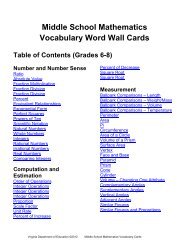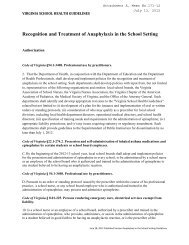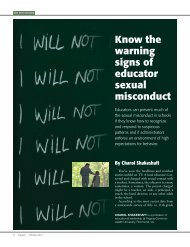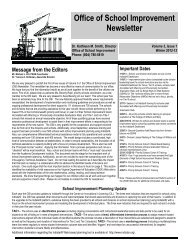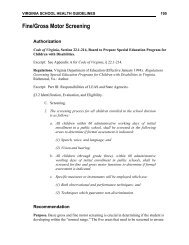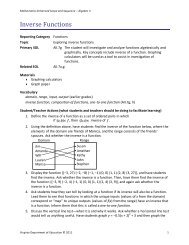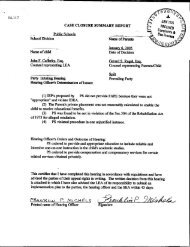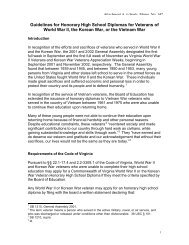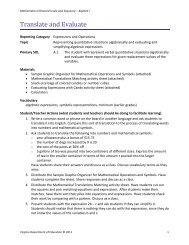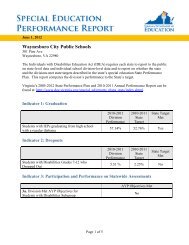What Makes Something Alive - Virginia Department of Education
What Makes Something Alive - Virginia Department of Education
What Makes Something Alive - Virginia Department of Education
You also want an ePaper? Increase the reach of your titles
YUMPU automatically turns print PDFs into web optimized ePapers that Google loves.
Session 3.7 – Measuring Tree Heights<br />
Teacher Questions & Notes<br />
-How do you think scientists measure<br />
things that are very tall?<br />
-<strong>What</strong> other objects could we measure<br />
using this method?<br />
Procedures<br />
5. Explain that scientists need to measure things too tall to measure<br />
by hand. Tell students they are going to be measuring the height<br />
<strong>of</strong> a tree (or the height <strong>of</strong> the building if no trees are available to<br />
measure). (Directions for this activity – Measuring Tree Height<br />
- are found at the end <strong>of</strong> this session’s procedures (pg. 91). Use<br />
the second method on the directions which is the Triangle<br />
Method.)<br />
6. Complete the following class activity first to prepare the students<br />
for measuring a tree using the directions in Measuring Tree<br />
Height:<br />
a. Ask the students if they have ever held their hand up to block<br />
the sun from their eyes on a sunny day.<br />
b. Ask them if their hand is the same size as the sun. (No)<br />
c. Ask them why they can block the sun with their hand if the<br />
sun is much bigger than their hand. Guide them to<br />
understand that the reason they can block the sun is because<br />
the sun is very far away.<br />
d. Explain to them that they are going to learn how to measure<br />
the height <strong>of</strong> a tree like scientists would. They will be able to<br />
do it because they will be some distance from the tree. It will<br />
be like being able to block the sun with their hand because<br />
they are some distance away.<br />
-How could this method be helpful to<br />
scientists?<br />
-Why would a scientist need to know<br />
the height <strong>of</strong> a tree?<br />
7. Examine the tape measure to be used for measuring. Have two<br />
students hold the tape measure with it stretched out at least 30<br />
feet. Have students notice the markings on the ruler. Determine<br />
what mark designates a foot. Determine what the marks in<br />
between two foot marks represent (e.g., inches, ½ inch). Have<br />
the class count the foot increments on the tape measure to twenty<br />
by ones. Next have them count the foot increments to 30 by<br />
ones. Ask them what might be a quicker way to count to 30<br />
(counting by 10‟s). Count to 30 feet this time by 10‟s.<br />
8. Have the students count by tens to 50 feet. Discuss how many<br />
10‟s are in 50. Now have students practice counting to numbers<br />
not divisible by 10‟s (i.e., 38, 29, 47, etc.). Count by tens and<br />
ones. For each number, determine how many 10‟s and how<br />
many 1‟s would be needed to count to the number.<br />
88<br />
<strong>Virginia</strong> Animals and their Habitats<br />
Topic 3



